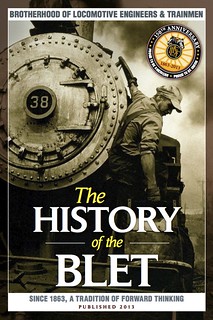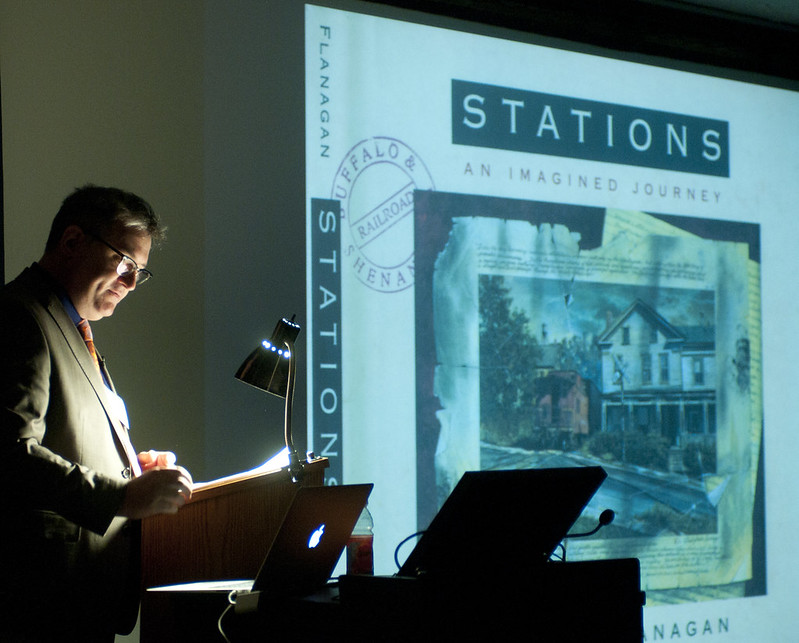Record attendance of 170, exceptionally well-received presentations, and a flurry of congratulatory emails marked the Center’s 2013 Conversations about Photography conference at Lake Forest College, April 12-14. Sponsors included host Lake Forest College,
Trains and
Classic Trains, Canon,
Railfan & Railroad, Leoni Engineering, and the Railway & Locomotive Historical Society. Twenty of the Center’s members supported the event as patrons.
The conference was number eleven for the Center, and “the best ever for me,” according to photographer John Fasulo of Beacon, New York. He added, “The ‘out of the box’ presentations broke new ground and were thought-provoking. Bravo!”
One regular attendee congratulated the Center on “a fantastic mix of subjects.” And he reminded us that you can’t always judge a book by its cover. “The sleeper hit for me was the Stations presentation. When I saw it in the program I didn’t expect much, as I’m not familiar with the book and the title doesn’t give much hint as to what’s inside. But Matt Kierstead’s enthusiasm for the subject, as well as his detailed analysis of what the author [Michael Flanagan] was trying to get at, made for a really compelling presentation, and I’ll be on Amazon today to place my order.”
During the Center’s report on its 2012-13 activities, founder John Gruber and his family were introduced. (Grandson Martin Gruber was on hand and seems to have contracted the railroad bug, as has his uncle, Dick Gruber, John and Bonnie Gruber’s older son. Wife Bonnie and granddaughter Tamara were also on hand.) The audience gave John a two-minute standing ovation in recognition of his establishing the Center, founding its Railroad Heritage journal, launching the Conversations conference, and presenting nearly innumerable exhibitions and other publications. Scott Lothes, Gruber’s successor, noted that everyone looks forward to continuing contributions from John.
A thirty-page, full-color program contained examples of works featured in the presentations and exhibitions, providing attendees with an instant souvenir and collectible. (Before you know it, copies will appear on eBay.)
Presenter Pablo Delano, who talked about the work of his father, Jack Delano, noted that he “got a lot of warm, heartfelt feedback.” The Center received several written comments from attendees who are looking forward to the Center’s forthcoming Chicago History Museum exhibition featuring the elder Delano’s portraits of Chicago railroaders taken in 1942-43. It opens April 4, 2014, and the Center is working on ways to incorporate a visit to the exhibition and a special program about it for the 2014 conference.
Michael Froio, a photographer from Williamstown, New Jersey, and also a presenter, remarked “It is exciting to be a part of a community that has such a diverse approach to celebrating our railroads through art and photography.” David Lester, a transportation historian and writer from Atlanta, said, “Great selection of presenters this year, and I particularly enjoyed the railroad journalism panel discussion.” Lester also congratulated the Center on “all of the hard work that went into this.”
Hyde Perce of Kenilworth, Illinois, seconded the endorsement of the arrangements and added praise for Lake Forest College’s cuisine: “I have to sign up for next year just to get my annual ‘fix’ of pecan rolls.” He also noted the conference’s general conviviality: “One of the really fun things I enjoy is just meeting conference attendees. Such a nice group of people.”
George Hamlin, a transportation consultant from Fairfax, Virginia, best stated a common sentiment: “Pat yourselves on the back, relax for a brief period, and then move on to more outstanding efforts.”
Just what the Center plans to do.
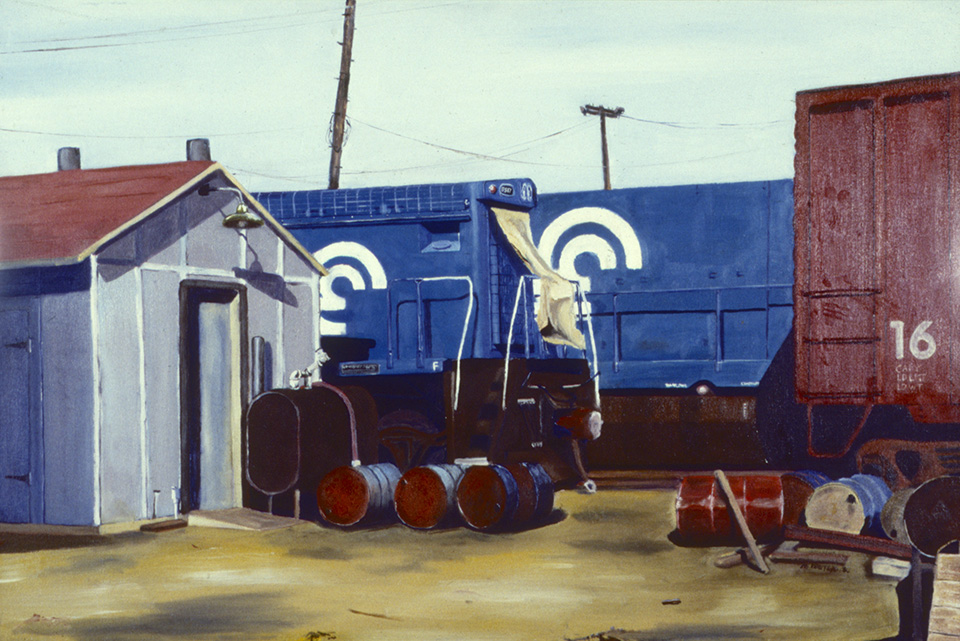






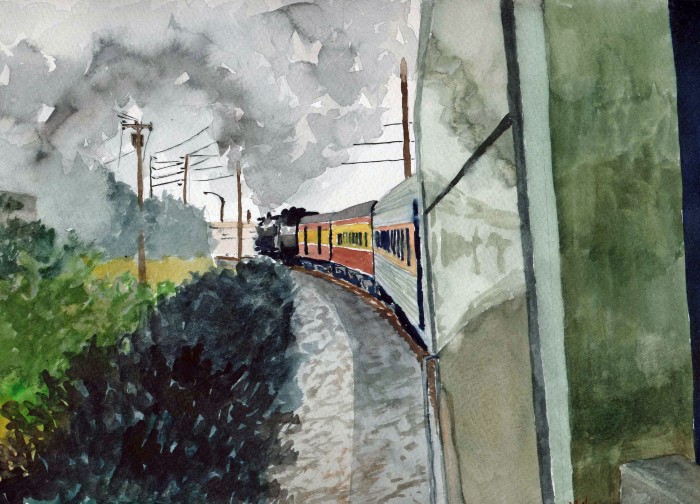
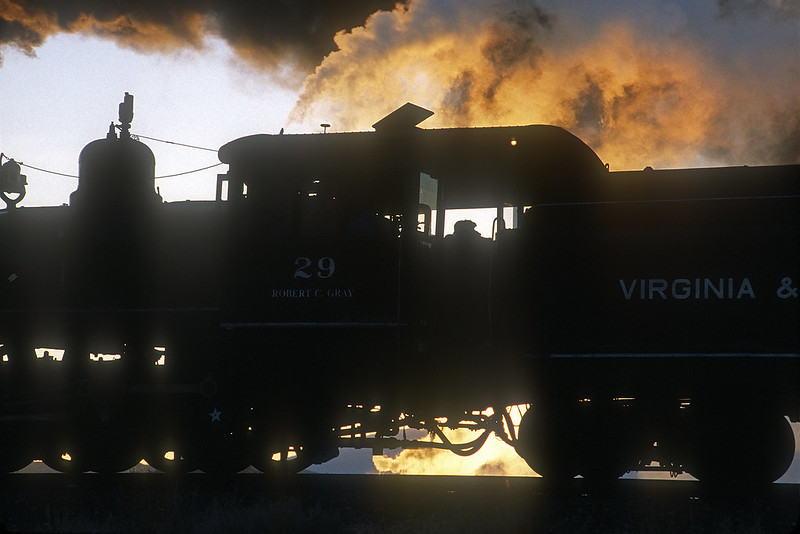 Virginia & Truckee steam locomotive no. 29 in Nevada in 2012. Photograph by Jim Koglin
Virginia & Truckee steam locomotive no. 29 in Nevada in 2012. Photograph by Jim Koglin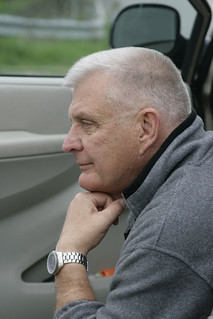 Jim Koglin, 1938-2013. Photograph by Jim Thomas
Jim Koglin, 1938-2013. Photograph by Jim Thomas Attendees of the 150th anniversary of the Brotherhood of Locomotive Engineers and Trainmen, held in Detroit, Michigan, viewing the Center’s exhibition, “Still a World Apart: 150 Years of Railroaders at Work,” sponsored by the North American Railway Foundation.
Attendees of the 150th anniversary of the Brotherhood of Locomotive Engineers and Trainmen, held in Detroit, Michigan, viewing the Center’s exhibition, “Still a World Apart: 150 Years of Railroaders at Work,” sponsored by the North American Railway Foundation.